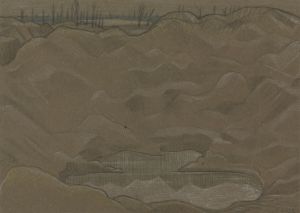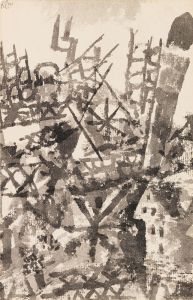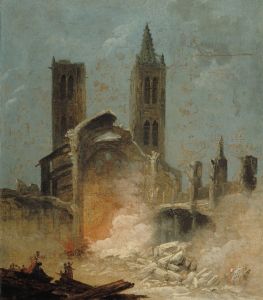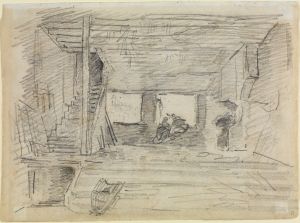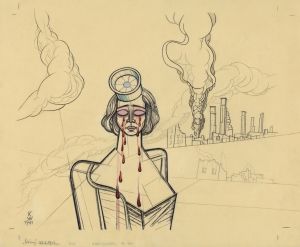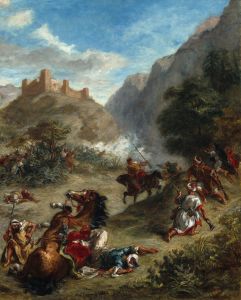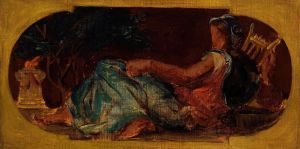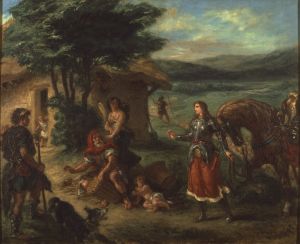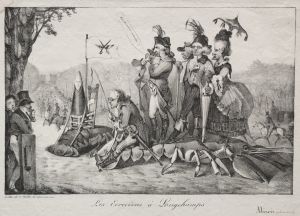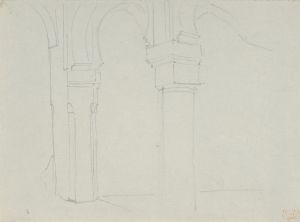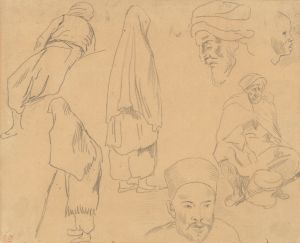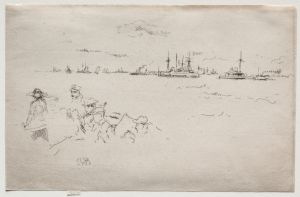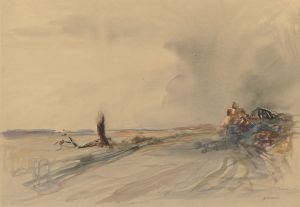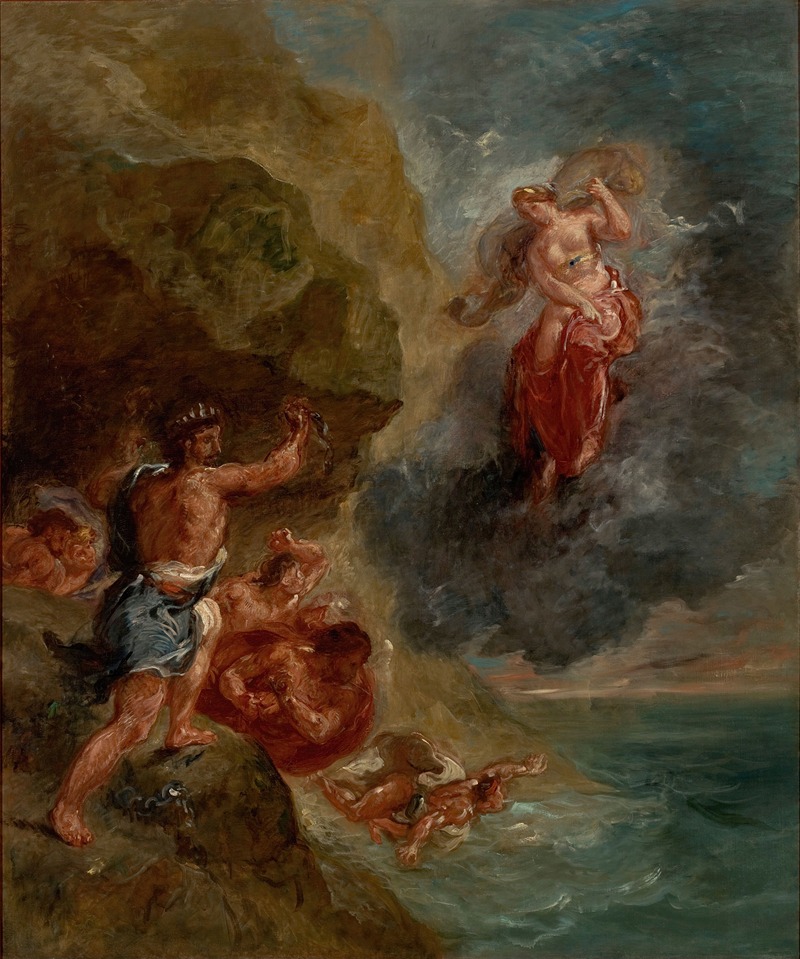
The Winter – Juno beseeches to destroy Eneas’ Fleet
A hand-painted replica of Eugène Delacroix’s masterpiece The Winter – Juno beseeches to destroy Eneas’ Fleet, meticulously crafted by professional artists to capture the true essence of the original. Each piece is created with museum-quality canvas and rare mineral pigments, carefully painted by experienced artists with delicate brushstrokes and rich, layered colors to perfectly recreate the texture of the original artwork. Unlike machine-printed reproductions, this hand-painted version brings the painting to life, infused with the artist’s emotions and skill in every stroke. Whether for personal collection or home decoration, it instantly elevates the artistic atmosphere of any space.
Eugène Delacroix, a prominent French Romantic artist, is renowned for his expressive brushwork and vibrant use of color. One of his lesser-known works, "The Winter – Juno beseeches to destroy Eneas’ Fleet," reflects his fascination with dramatic historical and mythological themes. Delacroix's oeuvre often drew inspiration from literature, history, and mythology, and this painting is no exception.
"The Winter – Juno beseeches to destroy Eneas’ Fleet" is based on a scene from Virgil's epic poem, the "Aeneid." In the narrative, Juno, the queen of the gods, harbors a deep-seated enmity towards the Trojans, particularly Aeneas, the hero of the epic. Her animosity stems from a prophecy that the descendants of Aeneas would one day destroy Carthage, Juno's favored city. In an attempt to thwart Aeneas's journey to Italy, where he is destined to lay the foundations for what will become Rome, Juno pleads with Aeolus, the god of the winds, to unleash a storm upon Aeneas's fleet.
Delacroix captures this moment of divine intervention with his characteristic dynamism and emotional intensity. The painting likely depicts the tumultuous scene where Juno, in her regal and commanding presence, implores Aeolus to act against Aeneas. The composition would have been designed to convey the chaos and power of the storm, as well as the desperation and determination of Juno.
Delacroix's style is marked by his use of vivid colors and energetic brushstrokes, which would have been employed to evoke the drama and tension of the scene. His Romantic sensibilities often led him to explore themes of conflict, passion, and the sublime, all of which are present in this mythological narrative. The painting would have been an exploration of the interplay between divine will and human endeavor, a common theme in Delacroix's work.
While specific details about the painting's creation, such as its exact date or current location, are not widely documented, it fits within Delacroix's broader body of work that frequently engaged with classical themes. Delacroix's interest in such subjects was part of a larger 19th-century trend where artists revisited ancient myths and legends, imbuing them with contemporary relevance and emotional depth.
In summary, "The Winter – Juno beseeches to destroy Eneas’ Fleet" exemplifies Eugène Delacroix's mastery in depicting mythological drama through his Romantic style. The painting serves as a testament to his ability to translate literary sources into compelling visual narratives, capturing the timeless struggle between divine forces and human destiny.





